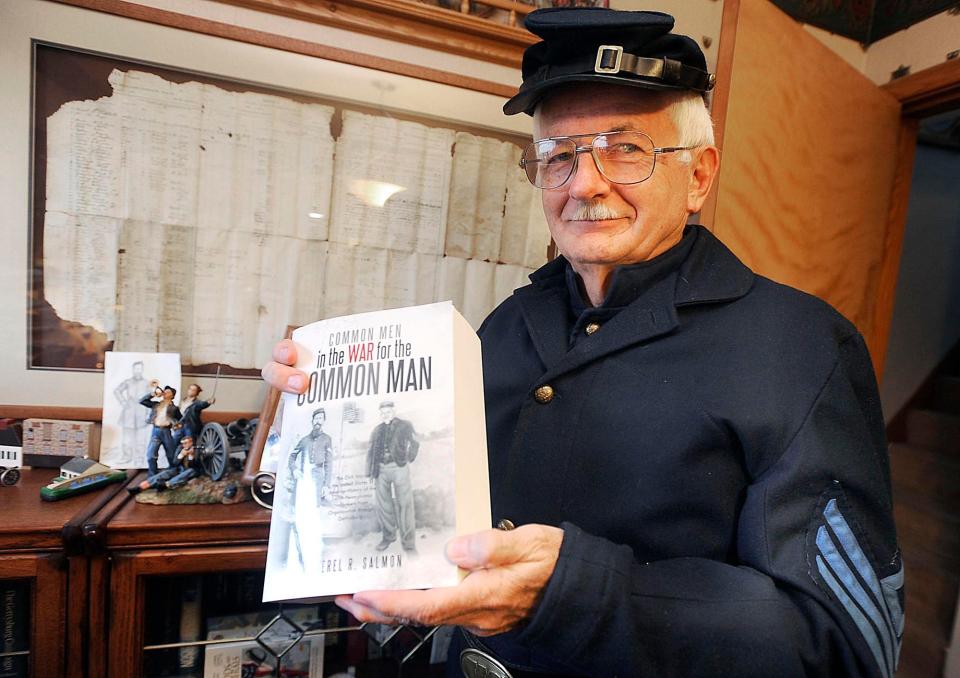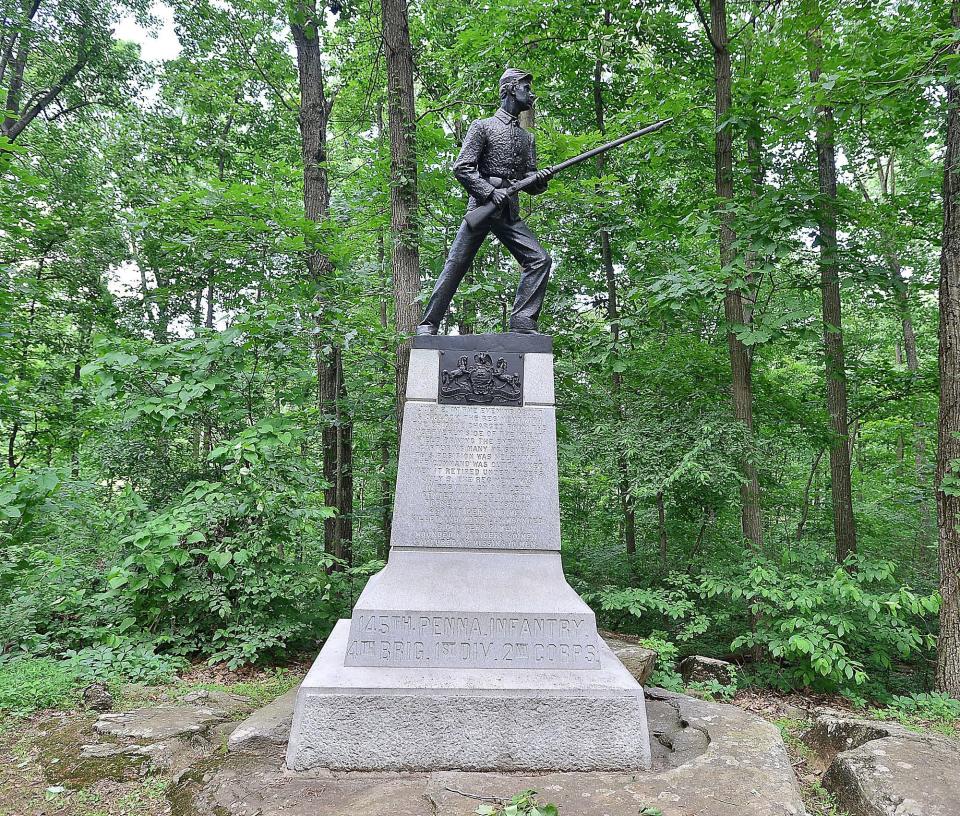Review: Book details Civil War history of 145th Pennsylvania Regiment formed in Erie
In the preface of his book on the 145th Pennsylvania Regiment, Verel Salmon informs the reader that his work is “a compendium of information on this great group of men and that it is, of course, acceptable to selectively read according to your interests.”
These words may come as a relief to some readers skimming the opening pages of "Common Men in the War for the Common Man, Book II," which is a sprawling, loosely tethered collection of memoirs, articles and documents created by men from the 145th Pennsylvania. At 1,125 pages, not counting the index, this is a heaping brick of a book.
Salmon, a retired teacher and school administrator, spent decades gathering, snipping and writing up these bits and pieces of the past, making this book a labor of love.
Along those lines, Salmon must be commended for his research. It takes dedication to spend so much free time in constant pursuit of anything and everything generated by, for and about a single regiment.
From 2018:Walk among Erie's tombstones leads to 145th Pennsylvania Infantry Regiment officer
The Civil War, more than any other American conflict, stirs something in people, turning them into collectors, re-enactors and even amateur historians.
Salmon is a member of this obsessive cohort, taking up the 145th Pennsylvania Infantry as the focal point of his enthusiasm. The 145th Pennsylvania was organized in Erie in 1862. They saw action in seemingly every major battle of the Eastern Theater from Antietam to the Appomattox Campaign, losing more than 400 men in battle and to disease.
More: Civil War cannons returned to their posts in Girard's Main Street median
This second volume of Salmon’s history follows the regiment from the end of Gettysburg in 1863 to the end of the war in 1865. Pulling from a range of sources — official records, service records, memoirs (published and unpublished), newspaper articles and correspondence — Salmon presents a mosaic of thousands of observations from dozens of individual soldiers.

We get a glimpse into camp life: soldiers talking about the hovels they built to withstand the winter months, their sore feet and the inevitable hankering for certain foods. There are reports of official business, like officers being dismissed from service and the number of soldiers available for duty on a particular day.
Of course, there are narratives of battles from lengthy newspaper articles and even sad descriptions of the deaths of individual men like Oscar Eaton at Spotsylvania, who was “shot dead beside one of the enemies Guns. He was instantly killed and said nothing.”
From 2019:Erie Cemetery ceremony honors Civil War veterans
What a reader will not find is much discussion of slavery.
The only significant discussions of slavery, the experience of African Americans and/or race come from a single document, John C. McIntosh’s recollections of his time in a Confederate prison.

Slavery is critical to understanding the war. Social and political fights over the so-called “peculiar institution” caused the war. The immorality of slavery inspired many northern men to fight against the South. Emancipation became a key component of the Union’s winning strategy, as was the enlisting of Black men to fight against the Confederacy. And, this is to say nothing of Reconstruction, Jim Crow, the civil rights movement, or even today’s racial tension.
Data: A census of Confederate symbols and monuments in the U.S.
It is possible that the men of the 145th did not think or talk about slavery, but that seems unlikely. Whether they were fighting primarily to free the slaves, restore the Union or both, the officers and soldiers from Erie and the surrounding environs would have talked and argued about slavery and race. If they weren’t talking about it, Salmon should tell us why he thinks this regiment had no opinion on the hottest topic of the day. Leaving slavery out of this book would be like writing a 1,100-page history of 2020 with only a passing mention of COVID-19.
For subscribers:Memorial honoring Civil War hero Strong Vincent will be dedicated in Waterford
Buffs interested in this Erie regiment will like Salmon's "Common Men." Discerning scholars and students might use this book carefully. To his credit, Salmon cites his sources, providing endnotes after the text of each chapter. This is a key element of the book for those readers who may want to track down certain documents they wish to see for themselves. That is the utility of a compendium. It is a starting point, a reference for buffs and future students of the war, but far from the final word on the 145th Pennsylvania or the experience of the people of Erie in the Civil War.
Joseph Beilein Jr. is a Civil War historian and the author of books and articles about the Civil War. He is an associate professor of history at Penn State Behrend, where he teaches courses on the Civil War, the Battle of Gettysburg, military history and American history.
About the book
Title: "Common Men in the War for the Common Man, Book II: The Civil War of the United States of America — History of the 145th Pennsylvania Volunteers After Gettysburg through War’s End"
Author: Verel Salmon
Publisher: Xlibris
Pages: 1,156
Release Date: 3/10/2022
List Price: $52.99 for paperback, $62.99 hardcover, $3.99 for e-book
Learn more: www.xlibris.com/en/bookstore/bookdetails/701455-common-men-in-the-war-for-the-common-man
Books:Erie native Hans G. Myers' book aims to give Civil War hero Strong Vincent his due
This article originally appeared on Erie Times-News: Review: Book details history of Civil War regiment formed in Erie

